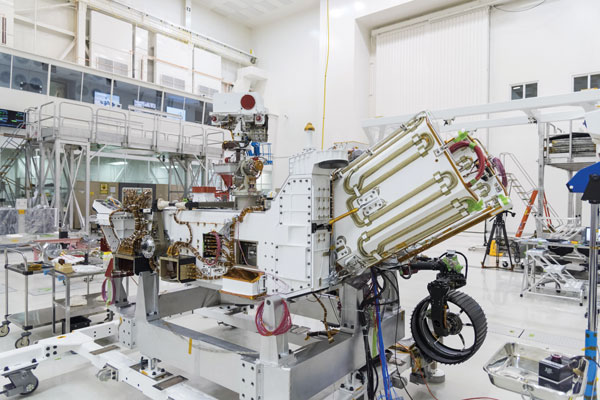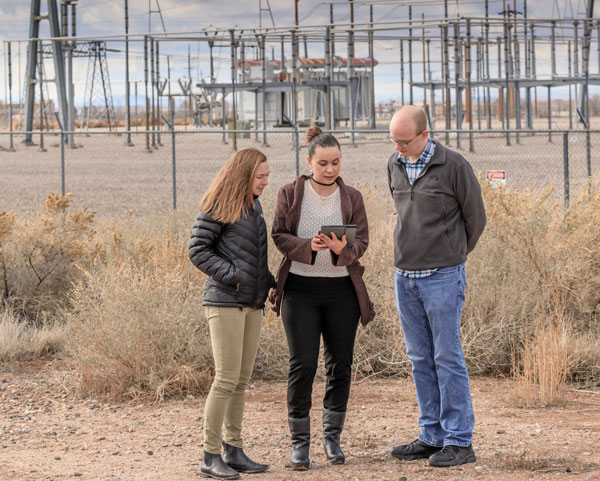
Mars 2020 Final Safety Analysis Report
Dan Clayton and Sandia’s Mars 2020 team submitted the Mars 2020 FSAR to DOE in support of NASA’s Mars 2020 mission. This report fulfills the analysis requirement of the presidentially mandated launch approval process. Without a completed and approved report, launch approval cannot be given. (8000)

Safe crude oil transportation
Sandia completed a multi-year project, sponsored by the DOE Office of Fossil Energy, U.S. Department of Transportation and Transport Canada, to assess combustion hazards associated with transportation of nonconventional crude oils in North America. One-of-a-kind critical fireball tests at the scale of 400 gallons required overcoming multiple technical challenges, including transporting full-component fuels from their sampling locations in North Dakota and Texas to Albuquerque and designing and implementing test apparatus that raised the oil to its boiling point and then released it instantaneously, triggering ignition. Three fireball tests were completed successfully. This work will inform state and federal lawmakers regarding U.S. regulation of crude-oil rail transport. (8000)

North American Energy Resilience Model
Sandia has developed advanced open-source production cost modeling codes to assess the coupling between the electric power grid and other critical infrastructure (e.g., natural gas), and to quantify system resilience to natural and man-made disasters for the DOE Office of Electricity’s NAERM. Given recent widespread power outages caused by extreme events such as Hurricane Katrina and Superstorm Sandy, the ability to accurately model the electricity grid and associated interdependencies is a high priority. The development of the NAERM is the highest priority goal for the DOE Office of Electricity. (8000)
Co-Optima biofuel molecules discovered
As a part of DOE’s Co-Optima initiative working to improve biofuels and engines in tandem for increased efficiency and lower carbon emissions, Sandia researchers discovered three new biofuel molecules that show octane hyperboosting (a phenomenon where the octane of a blend exceeds the octane rating of the base fuel or the pure biofuel). This discovery suggests there may be many biofuel molecules that exhibit this behavior, potentially paving the way for new discoveries in combustion and faster market adoption of new sustainable biofuels. (8000)